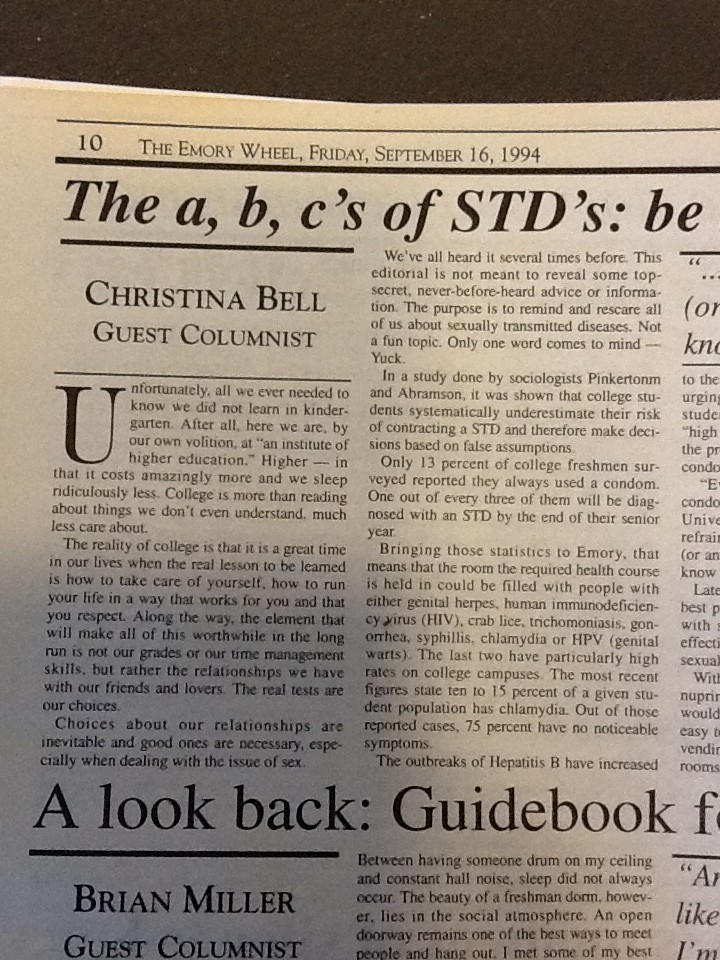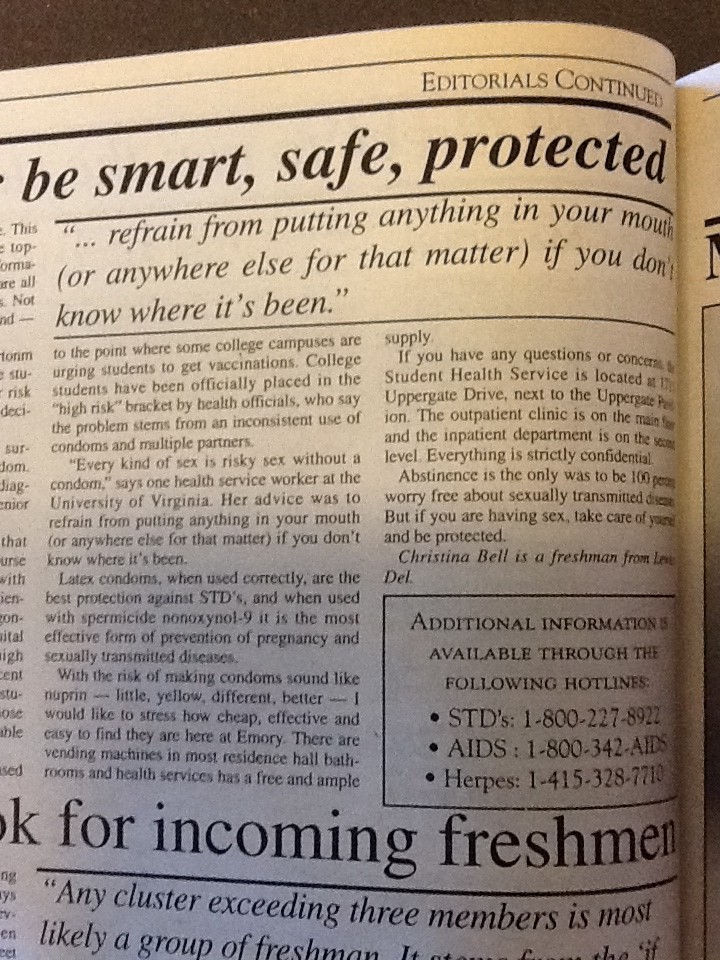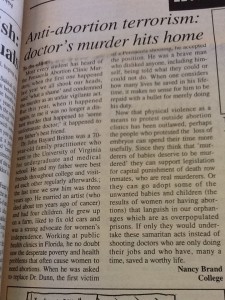Factors that Shape One’s Sexuality
Talks with S
10/20/2012
We have been discussing about giving one the “freedom” or “choice” to choose ones own sexuality. The question that I plan to answer in today’s blog is: How does one choose this sexuality? What were the experiences that one may have encountered that ultimately formed or shaped their sexuality?
An individual’s gender and sexual identity, the attributes related to it, and their behavior are shaped by experiences encountered by them their entire life. The phrase “entire life” includes their childhood, pre-adolescence, adolescence, later-adolescence,
adulthood, and even their later life. This includes their interactions with their families, friends and intimate relationships with their partners (DeLamater and Friedrich 63). It is believed that ones sexual interests and desires begin the moment one is born into the world, and continue to formulate until we die. DeLamater and Friedrich in Human Sexual Development, talk about “childhood” as the time in ones life where one establishes certain kind of preferences for certain kind of stimulations, which then persist throughout ones lifetime. The simple act of a child sucking on his or her toes and fingers is seen as a “natural form of sexual expression” (DeLamater and Friedrich 64).
An essential element of any kind of mature relationship with a partner is based on “attachment” -emotional and physical. This attribute is said to blossom during ones childhood. The physical contact of a child with his or her parents that brings out warmth, security, and a comforting feeling helps shape this attachment in a positive spectrum. If this physical contact is negative, it leads to insecurities with oneself, discomfort at the idea or actual sensation of someone else’s touch and even identifying others as always having bad motives. Sometimes these all possibilities may be valid, if a child has encountered a traumatic experience of being raped or assaulted as a child. This “childhood” phase of ones life is often regarded as a stage when one is not sexual or has no quantitative idea of what sexuality really is. This has been therefore proven as a myth in Human Sexual Development.
The next stage in an individual’s life is the pre- adolescence phase when he or she gains experiences with masturbation, and experiences sexual attractions with other individuals. When an individual reaches the actual adolescence stage, he or she is deemed as having become “sexually mature” in terms of sexual interest, emotional compatibility and physical viability. In the later stages of adolescence, between ages 16 to 19 years, an individual establishes his or her gender identity. Establishing this gender identity is an essential component of establishing their identity as a whole. DeLamater and Friedrich state,
Early childhood is also [in addition to several other important experiences that a child may witness during this stage] a period during which each child forms a gender identity, a sense of maleness or femaleness (64).
In today’s society, a parent or a guardian will expect, or rather want a child (set to be in his or her “childhood” stage) to be inclined towards playing with dolls as a symbolism of her “femaleness” or play with gun toys or ninja figures as a symbolism of his “maleness”. It is, however, in the “later adolescence” stage that ones sexual identity truly emerges. Individuals entering this “later adolescence” stage may choose their identity as either homosexual, heterosexual, bisexual or the like. In my opinion, this is the most critical stage in ones lifetime. This is so because- at this “later adolescence” stage one chooses his or her identity, after which only can he or she move towards establishing a stable lifestyle with self-confidence and maturity.
When one enters the “adulthood” stage he or she is regarded as having the full emotional and physical maturity to “make informed decisions about reproduction and prevention of sexually transmitted infection, including HIV infection” (DeLamater and Friedrich 66). It is in the “adulthood” stage when concepts such as “marriage”, “living together” and “getting pregnant” are common notions. DeLamater and Friedrich state,
Some adults engage in sexual activities that involve risks to their physical health, such as STI’s ad HIV infection. Examples of such activities include engaging in vaginal or anal intercourse without using condoms, engaging in sexual activity with casual partners and engaging in sex with multiple partners (67).
The use of condoms and other contraceptives is now witnessed as coherent with “sexual health”. Many believe that these measures are ideal; and can be viewed an integral step towards protection of oneself against unwanted diseases, that one may get from an unknown or unfaithful partner. In some peoples view, mainly the individuals belonging to a societal group that call themselves “pro-life”, “to be prepared” equates being “loose” (Simonds 428).
Having sex before marriage is one concept, however, having sex before marriage and getting pregnant with or without use of contraceptives is another ball game all together. It is only recently, since the late 20th century that the use of “contraception has not shared the social stigma as abortion” (Simonds 428). Based on the decisions one makes during “adulthood”, one may or may not use contraceptives to avoid getting pregnant. The “pro- choice” deem it their right to abort a baby after getting pregnant had they used a contraceptive measure or not. They wish to regard this process only as a “chosen activity” (Simonds 428). On the other hand, “pro-life” or anti-abortionists state, “the aborting woman is selfish and self indulgent” (Simonds 428) and regard these aborting women, profit-making doctors and clinic workers as “baby killers” (Simonds 427 & 428). They even predict the collapse of patriarchal heterosexual family unit as a result of continued abortions. This typical “heterosexual family unit” includes a man and woman married with a child. Even DeLamater and Friedrich state,
Marriage is the most common sexual lifestyle in the United States. Marriage is the social context in which sexual expression is thought to be most legitimate (66).
The question that then comes to mind is: What about a woman getting pregnant when she isn’t married? Is she now required to get married, because she is pregnant, or should she be allowed to abort the child because she isn’t and doesn’t want to get married? According to the poll data mentioned in From Contraception to Abortion: A Moral Continuum, “a large majority [public data collected] supports abortion when a pregnant woman’s life is endangered by the pregnancy, when her pregnancy resulted from rape or incest, or when the fetus is ‘defective’ (Simonds 428). This data is said to have smaller support if the woman may want to abort the child due to reasons such as interference with work or education or affordability. The entire article talks about a “woman” not wanting or aborting a baby. The question that arises to my mind is what about “men” wanting the woman to abort the baby? What about the woman wanting to keep the baby but not being able to keep the baby as she alone cannot after to raise a child without financial support from the biological father of the child? What about a situation where the husband is now deceased and the woman not wanting to raise a child that reminds her of her deceased husband? There are so many situations that need to be considered before taking a stance.
The “pro-choice” identify motherhood as a choice that is personal to them, and since its their body that will have to bare the child, they should have the “choice” to abort the fetus if they consider themselves unworthy of being a mother. Although this seemed justifiable to me at first, I soon changed my thoughts when I related it to another concept all together: suicide. If we are “not allowed” by law to harm our own bodies even though it is ultimately our own body, then the government is right in a way to make the practice of abortion “illegal” in some aspects.
Issues of having sex before marriage, the elderly having sex, abortion, assault, etc. are topics that do not have one single justifiable answer, as each individual’s story pertaining to each one of these topics is different and cannot be pinned down to one correct solution. Various “cultural attitudes” (Simonds 429) suffice in society that may diverge one to take a particular decision. These decisions that one may take as an adult (most countries acknowledging this as 18 years and older) and the experiences one may encounter throughout ones lifetime- covering all phases of life from birth to death- help to shape ones sexuality. Since “human beings are sexual beings throughout their entire lives” (DeLamater and Friedrich 64), changes in ones sexuality during the course of their lives may also occur after “developing greater understanding of oneself or [their] partner” (DeLamater and Friedrich 67).
Citations:
DeLamater, John D. and Friedrich, William N. “Human Sexual Development”
Simonds Wendy. “From Contraception to Abortion: A Moral Continuum”






